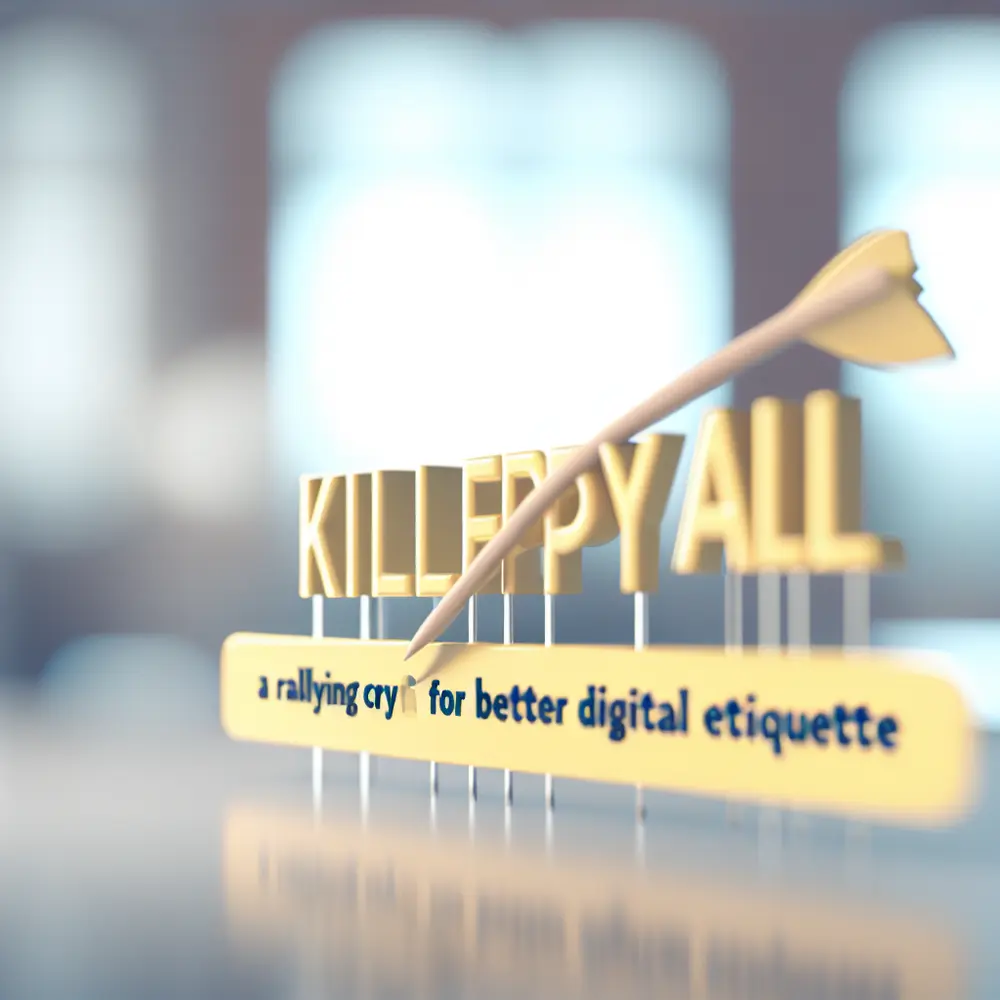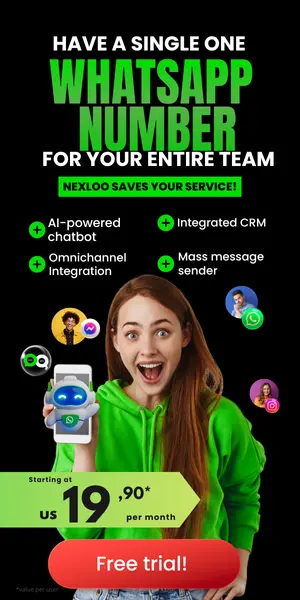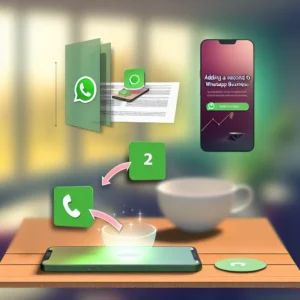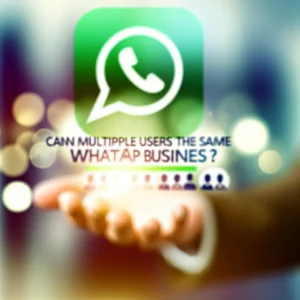The Rise of Digital Etiquette: Why It Matters More Than Ever
In today’s remote work environment, digital etiquette is more crucial than ever. With just a click, an email can escalate into a digital nightmare. You control your e-communication; nobody wants to be the person who sends a message to the entire company at 3 a.m.
As workplace communication shifts online, the subtleties of digital etiquette become vital. The written word can easily be misinterpreted. By using clear subject lines and addressing the right individuals, you can avoid miscommunication and its chaotic consequences.
Moreover, mastering digital etiquette goes beyond avoiding mistakes. It showcases essential professional skills that can advance your career. Clear communication, both in-person and online, positions you as a considerate colleague and future leader. In the digital era, effective communicators often stand out from their peers. Visit the complete guide to digital communication advantages for more insights.
Humor can add a positive touch to digital interactions, yet using it wisely is vital. A well-timed joke can brighten someone’s day, but it risks backfiring if the recipient doesn’t share your sense of humor. Always consider company culture and your audience before injecting humor into your messages.
Finally, remember that every email or message you send reflects your professionalism. By promoting positive communication habits, you contribute to a more respectful workplace, facilitating smoother collaborations and enhancing team morale. So, when in doubt, think before you type!
Case Study: Tech Innovations Inc.
At Tech Innovations Inc., employees drastically improved communication by implementing guidelines on digital etiquette, leading to a 30% reduction in misinterpretations. They saw a 15% increase in team collaborations as a direct result of clearer and more considerate digital communications.
Reply All: The Email Fiasco We All Love to Hate
The infamous “Reply All” has earned a notorious reputation in digital communication. We all have experienced an email intended for a select few spiraling into a loop of replies, cluttering inboxes and eliciting eye rolls. Witnessing a department groan at another irrelevant response is almost a rite of passage.
When you use “Reply All,” it often indicates a lack of awareness regarding digital etiquette. Email is vital for professional communication, but using it responsibly shows respect for your coworkers’ time. Excessive replies not only distract from important discussions but can degrade workplace morale and efficiency.
The fallout of misusing this feature isn’t just annoying; it can harm professional relationships and collaboration. One poorly timed response can escalate tensions, creating a work culture where responding becomes obligatory, filling threads with noise instead of substance. Be mindful of when to use reply options in emails.
Reducing “Reply All” usage enhances professional skills. By curbing this impulse, employees begin to evaluate the relevance of their responses, improving overall communication. This small adjustment leads to a clearer inbox and more insightful discussions, nurturing a more efficient work environment.
Ultimately, the “Reply All” function serves both as a cautionary tale and a lesson in digital etiquette. Understanding its pitfalls enables employees to improve communication strategies. Together, let’s rethink how we interact through email, embracing concise and appropriate responses.
Case Study: Marketing Solutions Group
Marketing Solutions Group implemented a policy discouraging the use of “Reply All,” resulting in a 25% reduction in email clutter. This change led to a noticeable improvement in team morale, with employees reporting a more streamlined communication experience.
Mastering the Art of Email: Best Practices for Professional Communication
Email remains a powerful tool for workplace interaction, yet many disregard basic digital etiquette. To enhance your email game, let’s explore best practices that can transform your communication.
Start by being concise. A well-structured email shows respect for your recipient’s time. Stick to key points, use bullet points, and break long sentences into digestible sections. Remember, you’re not writing a novel; your colleagues have busy schedules too. Leverage your communication tools effectively to automate and streamline processes.
Next, double-check your recipient list. Avoid the dreaded “Reply All” mess. Direct your email only to those who need the information, streamlining communication and avoiding the digital equivalent of a crowded water cooler discussion.
Tone matters greatly in email etiquette. While emoticons can enhance your message, use them sparingly in a professional context. A smiley can lighten the mood, but overuse may undermine your professionalism. Also, be aware of cultural differences regarding tone and humor.
Don’t forget to include a relevant subject line. As your email’s title, it should be catchy, informative, and specific. A poor subject line risks being overlooked, while a compelling one encourages timely responses and enhances communication.
Lastly, ensure your email signature is impactful. It should include not only your name and title but also links to your professional social media or company website. A well-crafted signature reinforces your professional brand each time you click send.
Case Study: Finances Corp.
Finances Corp. implemented email best practices that resulted in a 20% faster response rate from clients. Employees became known for their efficient and professional communication style, significantly enhancing client relationships.
Navigating Awkward Situations: What to Do When Someone Hits ‘Reply All’
In the workplace, hitting ‘Reply All’ can create chaos. To embrace digital etiquette and manage these moments, follow a few key strategies.
When someone mistakenly hits ‘Reply All,’ professionalism is key. A light-hearted response can defuse tension. A creative comment like, “Let’s keep this chat between us next time!” can ease the moment and remind everyone about careful communication.
If you’re inundated with ‘Reply All’ replies, stay calm and avoid adding to the chaos. Instead, privately contact the person responsible and offer gentle feedback about evaluating recipients before sending. This encourages growth without shaming them publicly.
In cases where sensitive information has been shared, promptly inform your supervisor or IT department to manage any fallout. They can help coordinate a professional response, ensuring confidentiality while minimizing damage.
Preventing future occurrences can be proactive too. Consider suggesting a workshop on digital etiquette, where you can engage colleagues through interactive discussions and scenarios. This fosters better understanding and equips everyone to avoid common digital pitfalls.
Case Study: Innovation Labs
Innovation Labs organized a digital etiquette workshop that resulted in a 40% reduction in repeated ‘Reply All’ incidents. The sessions transformed communication practices, making the office a more pleasant environment.
Professional Skills 101: Building Your Digital Communication Savvy
Digital etiquette is reshaping workplace communication, and mastering it can elevate your professional skills. Hitting “Reply All” can often lead to chaos, making everyone wonder about your intention. Avoid unnecessary email threads for a more effective communication style. Consider integrating automation techniques into your strategy for better efficiency.
Email communication extends beyond avoiding “Reply All.” Craft concise, clear emails that maintain the reader’s attention. A straightforward subject line can enhance response rates, leading to more efficient communication.
Consider the tone of your messages. Since digital communication lacks vocal cues and body language, aim for clarity and professionalism. Infuse humor judiciously, balancing engagement with respect.
Timing is also crucial. Recognize the fine line between promptness and overwhelming your colleagues. Assess the right moment to communicate for optimal effectiveness without adding to email fatigue.
Finally, utilize follow-up etiquette wisely. If you haven’t received a response, sending a gentle reminder shows respect for your colleague’s time while reinforcing your professionalism.
Case Study: Apex Solutions
Apex Solutions implemented digital etiquette training, resulting in a 50% increase in communication efficiency. Employees reported improved relationships and less confusion in project discussions.
The Dos and Don’ts of Digital Etiquette: A Quick Reference
Mastering digital etiquette is crucial for maintaining professionalism at work. Here’s a quick guide to navigating workplace communication effectively.
Do: Think Before You Hit Send
Pause before sending. Ensure your information is relevant to everyone included. Your emails reflect your professional skills and respect for colleagues.
Don’t: Use All Caps
All caps can come off as shouting. Use bold or italics for emphasis instead. Maintain a calm tone to foster effective communication.
Do: Be Clear and Concise
Aim for clarity. Use bullet points for easy reading. Straightforward communication helps reduce confusion and ensures key messages are understood.
Don’t: Overuse Emojis
Emojis can enhance communication but use them sparingly. Overloading emails with them may lessen your credibility. Keep tone appropriate.
Do: Respect Reply Times
Responsiveness is essential, but respect *boundaries*. Not everyone can reply immediately, so wait patiently for responses to maintain positive communication.
Don’t: Forget the Subject Line
Your subject line should be specific and descriptive. Vague subjects can lead to misunderstandings and unnecessary back-and-forth emails.
Do: Acknowledge Receipt
Acknowledge important emails and documents. A simple “got it” shows professionalism and encourages future engagement.
Don’t: Rehash Old Conversations
When replying, avoid repeating previously covered information. Summarize key points to maintain continuity and clarity.
Case Study: Stellar Marketing
Stellar Marketing established a dos and don’ts guide for digital etiquette. This led to a 35% improvement in communication clarity and fostered a more positive team dynamic.
Creating a Culture of Respect: Encouraging Better Digital Communication Among Teams
Establishing strong digital etiquette in the workplace is critical. It’s about fostering an environment where respect and clarity excel. Let’s find ways to improve workplace communication.
Consider the “Reply All” button. Resist unnecessary use, as it clutters inboxes and frustrates colleagues. Ask yourself if everyone on the thread is truly needed for the discussion.
Next, be concise. Long-winded emails can lead to confusion; instead, aim for brevity. Clarity allows for better engagement, and your coworkers will appreciate your succinct messages.
Using humor can build camaraderie, but use it carefully. A well-placed joke can lighten the mood, yet humor can fall flat if misunderstood. Always gauge the appropriateness of humor in context.
Encouraging professional communication requires active listening. When reading an email, consider the sender’s perspective before responding. This fosters thoughtful, caring interactions.
Organizing workshops on email etiquette can also promote better practices. Engaging team discussions around digital communication fosters a collective commitment to improvement.
Case Study: Unity Group
Unity Group created a digital etiquette workshop that enhanced communication across teams. They observed a 30% increase in productive discussions, leading to a more cohesive and respectful workplace culture.
From ‘Reply All’ to Respectful Communication: Embracing Digital Etiquette
Digital etiquette has evolved from avoiding ‘Reply All’ to fostering a culture of respectful communication at work. As emails and messages proliferate, cultivating professional manners that emphasize clarity and efficiency is crucial. Explore customer support solutions to enhance communication effectiveness.
Every email requires consideration of your audience and message intent. Occasionally, a simple ‘Reply’ suffices. While a cat video may delight some, it’s unlikely to amuse the entire team, emphasizing the importance of selective engagement.
Reflection on digital exchanges sharpens professional skills. Not every email requires an immediate response. Encourage brief updates, reserving extensive discussions for face-to-face meetings to respect everyone’s time.
The tone of emails also deserves attention. Recognizing the absence of vocal inflections necessitates clear intent and careful humor use. Well-placed humor can enhance communication, while misplaced humor can create misunderstandings.
Championing digital etiquette establishes a foundation of trust and respect essential for collaboration. By practicing these principles, you foster a respectful workplace culture and enhance your digital communication skills. For further insights into effective communication strategies, visit Nexloo’s support platform.









